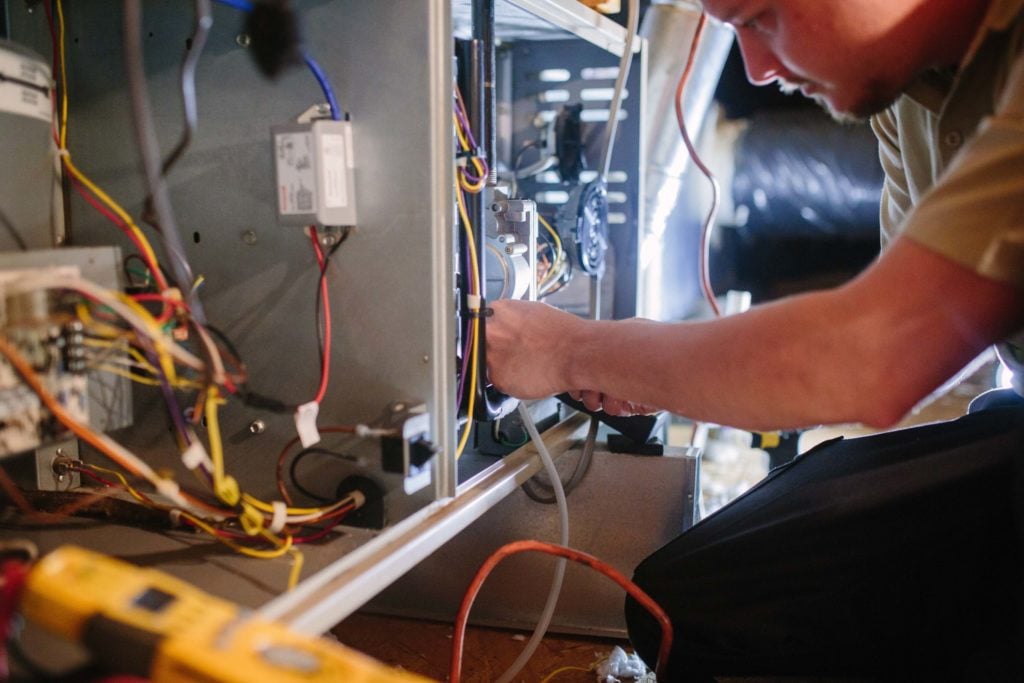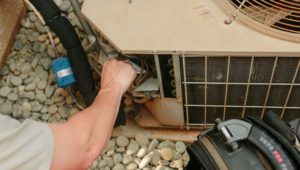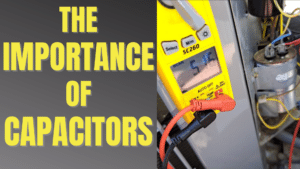The Hot Surface Igniter has become an industry standard in gas heating systems in the Sacramento Valley. To technicians and furnace manufacturers everywhere, the sequence of events that takes place for a gas furnace to start a flame that jets into the tubes of the heat exchanger is like a well-choreographed dance. Stick around while we talk about an integral part of the sequence to bring heat into a home: the hot surface igniter.
Intro
As the winter season approaches, we are going to be using our gas furnaces more and more. A lot of those furnaces won’t be lighting up when they’re turned on for the first time this season. The hot surface igniters that start the flame in a gas furnace often fail. It’s almost as common as replacing a capacitor in air conditioning systems all over the city every spring.
How They Work
Hot surface igniters are a resistance element made of silicon carbide or silicon nitride. Anywhere from 80 to 240 volts are applied to the wires attached to the igniter. A ceramic base insulates the wire connection to the carbide element which looks like the letter M on most applications. Spirals are another shape I see. Most nitride igniters are formed in the shape of a 1.5-inch flat stick or a 2-inch long cylinder.
When the voltage is applied to the wires, the element starts to glow because of the resistance the carbide creates from one wire to the next. When it glows long enough, gas is poured over it, and the flame ignites.
Hot Surface Igniters are Resistance Heaters
As mentioned earlier, hot surface ignitors, or HSI’s, are resistance heaters. The element itself glows orange when the voltage is applied. How hot that element gets depends on the voltage being applied to it. A 120-volt HSI will glow at around 2500 degrees Fahrenheit. Most gas fuels will ignite around 1100 degrees, so 2500 degrees is a little excessive. A 240-volt igniter burns even hotter. Several control boards these days are made to support an 80-volt igniter. This way the carbide breaks down slower, adding life to the system.
Hot Surface Igniters are Better Than a Pilot Light
Before hot surface ignitors and spark ignition was around, we had gas pilot lights that would stay lit burning a 1 to 2-inch flame year-round whether the heat was on or not. When the heat was turned on, the gas valve would flow more gas over the pilot to ignite the burner assembly that carried the flame.
For a pilot to stay lit all year, it could cost up to $150 dollars a year depending on where you are in the US. Some of you reading this post have pilot lights still going strong on your 35-year-old furnaces! Although very reliable when needed, and not a truly major expense, it’s not a great use of resources to just let that gas flame just burn all year.
On-Demand Efficiency
You might be okay with a small pilot burning in your furnace all year, but it really freaks out some of our customers. A lot of people don’t even know that new furnaces these days don’t have pilots anymore. They come with on-demand ignition components like an HSI. Meaning the ignitor only comes on when needed and even then, it only comes on for less than a minute at a time.
Hot Surface Igniters are Silicon Carbide
Silicon Carbide is one of the most common components that make up a hot surface igniter. Not only are these igniters used to light gas furnaces, but they are used for lighting stoves, boilers and other appliances that heat things around your house. Carbide is used as an abrasive, as a cutting tool, and has some automotive applications as well. The first carbide igniters were actually produced in 1969. From then until now they have become one the main choices for manufacturers to use as their ignition source. The other source being spark igniters, which we’ll talk about on another blog post.
How Long Do Hot Surface Igniters Last?
Just like most components on your HVAC system, these parts last about five to ten years. Yes, you can get lucky and have one last for twenty years, but it’s few and far between. Different hot surface igniters last longer than others. The trend over the last five to ten years has been to use the more durable silicon nitride igniters. They seem to be less brittle, making them better able to stand the test of time.
Why are Hot Surface Igniters Such a Common Replacement Item Each Year?
So why do these silicon carbide igniters break so often? The fact is, a gas flame pours over these ignitors which applies a lot of damaging heat to them. The same thing that makes them work also destroys them!
8 Reasons Why Hot Surface Igniters Break Down Prematurely:
1. Brittle HSI’s
Just today as I was called by one of my techs who said they accidentally broke an HSI as they were cleaning the burner assembly on a routine maintenance call. It happens. If you took your index finger and thumb and brought them together even somewhat quickly, that would be enough force to break the carbide tip of a hot surface igniter to pieces.
2. Overuse
A furnace that cycles on and off excessively will reduce the lifespan of an HSI. Making sure the system is properly sized for the house is probably a good idea. We say it all the time, but an improperly sized unit is going to cause all kinds of problems. Maybe not in the first year of its life, but long after the contractor who installed it is gone, and not responding to the customer’s phone calls anymore.
3. High Voltage
If an HSI is exposed to higher voltages than it’s supposed to receive, they will surely break sooner than they should. An 80-volt HSI should have about 80 volts applied to it. Applying 120 volts to that HSI will cause it break, and sometimes almost immediately. Having too low of voltage may not let the igniter burn hot enough.
Once, in my early service years, I replaced a 240 ignitor for a package unit with a 120 ignitor. Not only did the HSI break on the first start-up, but the high voltage backfired to the control board and took it out as well, which put my employer in the position of having to now replace the customer’s control board. I never did that again…
4. Contamination
Some field experts say that the oils on the hands of technicians will cause the carbide tip to break down earlier than it should. Other experts say it won’t. One thing is for sure, the fewer contaminants that touch the surface of this red-hot igniter, the better. Other contaminants around the house that can get on the hot surface igniter are sheetrock dust, condensation, dirt, rust, and fiberglass.
5. Gas valve pressure
An overfired gas valve will cause the flame to be hotter than it should be. Any kind of heat is going to break down the HSI naturally. It’s parts can last longer if you make sure the system is set up properly.
6. Faulty control board
In most cases the ignitor on the furnace is lined up with the flame that shoots into the heat exchanger. It starts glowing red-hot when the control board tells it to come on. If the board doesn’t tell the HSI to turn off, it will continue to glow red hot. You’d likely have a faulty board in this case, and that won’t be good for your HSI either.
That hot surface igniter will be energized in about a minute. Most igniters achieve maximum temperature in less than 15 seconds. Some ignition sequences can leave the igniter burning for about a minute. The less the igniter has to be on, the longer the lifespan of the igniter. Some things can’t be changed on a furnace such as this designed ignition sequence, so sometimes we’re just stuck with what we’re given.
7. Propane gas
Propane is a very viscous gas. If you were to compare a natural gas furnace to a propane gas furnace after just five years of use, you would see the burner assembly on the propane system looks like it needs to be cleaned more than the natural gas burners. I’ve seen hot surface ignitors that stand in the stream of a propane flame have the top half of the carbide tip ripped off after just 3 to 5 years.
8. Radiant heat
A heat exchanger that is overheated at shutdown could radiate extra heat on the ignitor to damage it or its ceramic base, especially in closed combustion systems like those Coleman or Intertherm downflow furnaces you find in modular and mobile homes. A fan cools the heat exchanger once the call for heat has been satisfied. Making sure the fan stays on for more than 90 seconds might be a way to correct this.
Standing pilot lights are a thing of the past. Furnaces these days have spark igniters or hot surface igniters. I don’t know that one is really better than the other. Hot surface igniters are replaced about every five years. Spark igniters have their downfalls too, though, which is why the industry hasn’t dedicated itself to one technology or the other.
Thanks so much for stopping by, and we’ll see you on the next blog post.
Fox Family Heating & Air serves Sacramento, Rancho Cordova, and all of Northern California. If you’re looking to schedule HVAC service in these areas, give us a call!




















